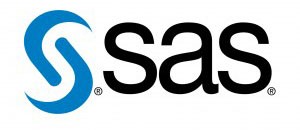How Long Does It Take to Get a Master’s Degree in Data Analytics?
Wondering how long it will take to earn a master’ degree in data analytics? There’s no set answer. It can take anywhere from 12 to 36 months or more to complete a master’s degree in data analytics program. At Stonehill, full-time students complete our Data Analytics Master’s Degree Program in 12 months. Part-time students can take up to two courses per semester. Courses meet over a seven-week term.
Why the difference in completion time? Several things come into play — completion time depends on the structure of the program, the number of courses taken per term or semester, and whether or not the program offers courses year round or only during the fall, winter and spring semesters.
Organizations want employees who have acquired the ability to analyze and use data. Companies don’t want to wait for them to be trained.
Master’s in Data Analytics Full or Part Time? What’s the Time Difference?
If you plan to attend a data analytics program on a full-time basis, the curriculum for a master’s in data analytics is usually completed over three or four semesters. That means full-time students are usually able to graduate in 12 to 16 months, depending on whether or not a summer break is included in the program.
Some programs offer students the opportunity to complete their degree on a part-time basis. Part-time programs generally take 24 to 36 months or more to complete. The length of time depends on the number of courses taken each semester.
Full-time students complete Stonehill's Data Analytics program over three semesters. Part-time students can take up to two courses per semester. Full- and part-time students begin their program in the fall, spring or summer semester.
Data Analytics Master’s Degree: In-Person, Online or Hybrid?
Gone are the days when master’s degree programs took place in-person in a classroom. Today, more degree programs than ever are offering using varied formats, from fully online to fully in-person. There are also programs that are designed in a hybrid format combining in-person and online coursework.
If you’re thinking about earning your master’s in data analytics, it’s important to think about how you learn best. Some students do better in a traditional, on-campus setting. They may find it easier to concentrate and enjoy connecting, problem-solving, and networking with other students from a wide range of backgrounds.
Other students prefer online learning. For them, things such as scheduling flexibility (important if students also hold a job or have a busy family life) and decreased commuting time/time saving are important. Still other students prefer the flexibility of a hybrid format, which combines in-person and online classes.
Stonehill’s Data Analytics Master of Science Degree Program can be completed fully online or in a hybrid format.
One of the things we really wanted to do with the Master’s in Data Analytics program was to make it a close cohort of people. Students share best practices, talk about the challenges they face in their jobs, and share how they’re using the skills they learn in the degree. One of the things students can expect is close relationships with their fellow students and making connections and professional connections that will last a lifetime.
Stonehill’s Data Analytics Master of Science Degree Program
The Data Analytics Master’s Degree Program at Stonehill can be completed in 12 months with classes occurring over three semesters. Students may also complete the program part time and take up to two courses per semester. Full- and part-time students can start in the fall, spring or summer semester.
Full- and part-time students can be complete the program fully online or with a mix of in-person and online classes.
SAS Academic Specialization at Stonehill’s Data Analytics Master’s Degree Program

A partnership with SAS, a worldwide leader in analytics software, gives graduate students in Stonehill’s data analytics program a valuable suite of resources and a competitive advantage in the marketplace.
SAS has granted Stonehill the ability to award a Tier 3 SAS Academic Specialization as part of the College’s Data Analytics Master of Science Degree Program. It is the highest level of credential that SAS offers its academic partners.
Students who complete the program will receive both a master’s degree and this academic specialization, affirming their technical expertise in conducting advanced data analysis in various SAS products. Students also have the option of pursuing up to two professional certifications.